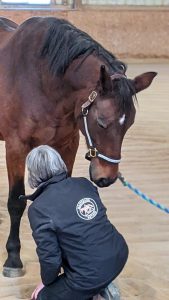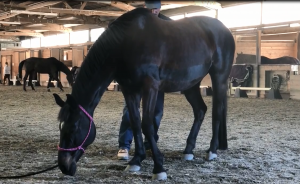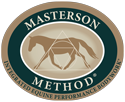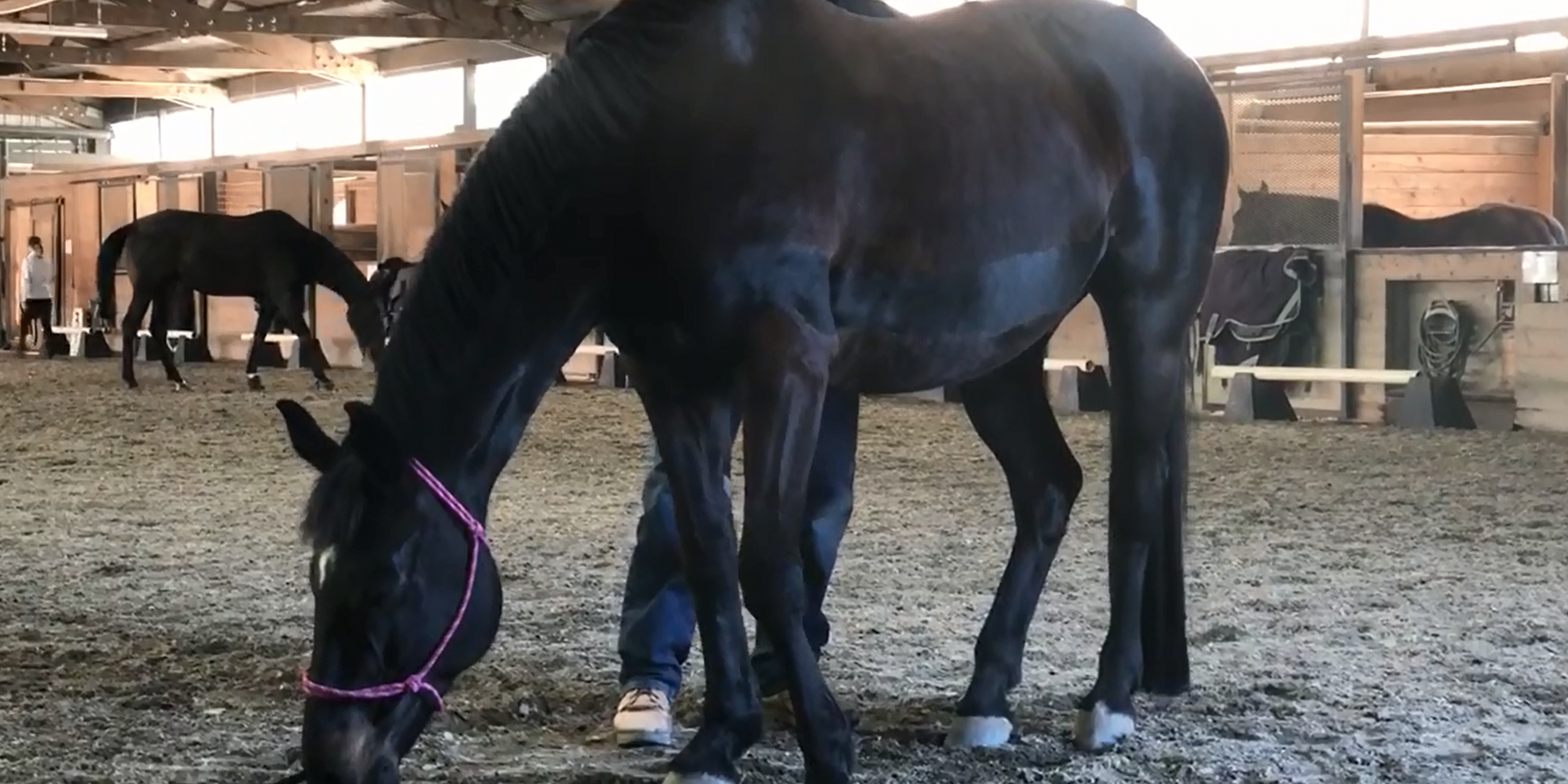by Jim Masterson
It’s been my experience when working on horses that have had an accident in the past such as a fall; going over backward; running into something; or an accident in a trailer, that the bodywork will often uncover what the horse’s body has been blocking out, sometimes for years.
When an accident or incident such as this happens the nervous system gets jarred, similar to what might happen to us when we’re in a car that’s been hit by another car. We may not break anything and might even trot off sound, but often afterward these things are just not “quite right”, and aches, pains or problems can begin to show up later.
As humans, we can complain and/or get something done about it. The horse doesn’t have that option. He’ll protect it and block it out and just get on with life (compensate) as best he can.
 The part of the horse’s autonomous nervous system that blocks out pain is called the sympathetic nervous system. This is the “fight, flight, or freeze” part of the nervous system. This is what kicks in and saves the horse’s life when it senses or feels, danger.
The part of the horse’s autonomous nervous system that blocks out pain is called the sympathetic nervous system. This is the “fight, flight, or freeze” part of the nervous system. This is what kicks in and saves the horse’s life when it senses or feels, danger.
The parasympathetic part of the nervous system is the part in charge of healing, resting, digesting, and restoring.
The natural flight, fight or freeze response in the horse is very strong. As horse owners, we work with this every day. This survival response does such a good job of blocking out pain or discomfort from a past incident, it doesn’t easily allow the body to completely let go of the tension associated with it. The horse is in a sense, always internally on the alert.
When you learn how to bypass the horse’s natural bracing and blocking response (sympathetic), then that part of the nervous system (parasympathetic) which allows the horse to release the tension it’s been holding, kicks in.
The process for doing this is simple:
1) Stay light enough and long enough for the horse’s sympathetic nervous system to stop working and for the parasympathetic to respond, and
2) learn to read and trust what the horse’s body language is telling you during the process.
Sometimes the results are surprising and dramatic, as in the case of Whisper, an amazing mare who attended the “Considering the Horse: Mind and Body” clinic in Nicasio, CA earlier this year. Whisper is a willing and intelligent jumper, who was brought to the clinic with her owner Addy.

Whisper had the usual tightness in areas that you would expect in an equine athlete, but there was an additional longer-term concern with her behavior as she had been becoming increasingly jumpy and nervous over time. Addy thought that there might be a physical issue that was making her increasingly uncomfortable.
During the bodywork, as she let her guard down more and more, deeper more embedded layers of tension started letting go, especially in the areas of her withers and sternum. It reminded me of horses I’d worked on that had a specific incident, such as an accident that happened in the past. However, at the time, Addy couldn’t remember anything serious that had happened to Whisper.
She allowed us to video Whisper as she really started to let this tension go. These are the times that we’re happy the horse has a stay apparatus that allows it to keep the legs from buckling.
It’s clear here that something deep had let go in Whisper.
A few days later after I’d returned home the following message was passed on to me from Addy:
Hi Jim,
I got this email from Adelheid (Addy) about Whisper, who is the mare that ‘passed out’ after finally landing in her parasympathetic.
Tonight when we came home and I was marveling at how good she looked after 4 hours in warm Friday afternoon traffic, and as she quietly went to graze, I flashed on this potentially disastrous day in March of 2016.
She ‘cast’ herself against the fence while rolling because the green grass hid the 2-3 foot wide depression and she slid into it. She laid very still until a neighbor came with his Jeep and we pulled her out using the soft cotton rope around her shoulders, at the withers, and over her blanket so the rope burns were minimal. TJ was expecting her to scramble up and do aerials once on the solid, wide ground but she sensibly got up, shook, and walked away…
Funny how I block this stuff out, but her body told the story.
This demonstrates how powerful the survival instinct is in horses to block out pain and tension, and just keep on doing their job. It also demonstrates how you can access that part of the nervous system that releases that tension, if you stay under the horse’s bracing response, and follow what the horse’s body language is telling you during the process.
Try The Masterson Method® on your own horse, with the Beyond Horse Massage Book and DVD.
Interested in learning at one of our hands-on courses with an instructor? Attend a Beyond Horse Massage Weekend Seminar
First photo courtesy of Alice Long.
Second photo and video courtesy of Addy.

